 |
 |
|
|
 |
 |
 |
|
|
|
Prol Shop
Prol TV
Prol Radio
Lalkar
Red Youth
Photos
|
 |
 |
|
|
 |
 |
 |
 |

| >>back to Proletarian index |
>>view printer-friendly version |
 |
 |
| Proletarian issue 39 (December 2010) |
 |
| KOREA: Eye witness to socialism in Korea |
 |
| A photo tour of some of the places our recent delegation visited in the DPRK. |
 |
 |
 |

DPRK statues: All of these busts in a special hillside martyrs' cemetery overlooking Pyongyang are actual people who gave their lives in the liberation struggle against the Japanese and US imperialists, some of them in the very early days when there were no actual photos.
Comrade Kim Il Sung and other members of the Workers' Party had artists hew their images and placed them there in that cemetery where they face the beautiful city which they gave their lives to bequeath to the people. It is a very moving place to go. We went on a day when family members came and paid respects, and we could quite clearly see that the people of Korea hadn't forgotten their history.

The spy ship Pueblo: This US spy ship was captured in DPRK waters, leading to a highly-publicised diplomatic incident in 1968. It was very embarrassing to the US, which had finally to admit that it was spying.
The Koreans allowed the crew to return home but kept the Pueblo as a symbol of resistance; a living symbol to remind the Korean people of US imperialist aggression.

Arirang: Korea is famous for arirang. Out of the people's struggle and out of their sense of unity have come an amazing ability to act together, as one, and this is embodied by arirang, an art form which is a communal, social mass gymnastic display.
Behind the performers are people holding coloured cards, which together make up enormous pictures to complement the gymnasts' actions, sometimes moving pictures, such as waves in the sea.
It's an amazing hour-long show. The show we saw was the winner of this year's arirang competition and it told the story of Korea, from the national liberation struggle and the national liberation war, right down to the current policies and problems facing the people. It is an art form which is very relevant to real people's lives and the current needs of the Korean people.
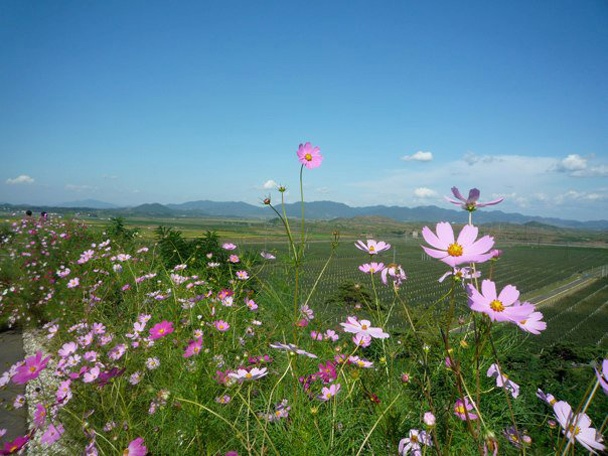
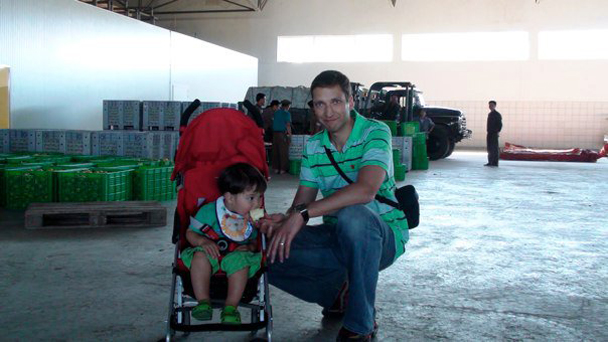
View of apple farm: This is a collective farm, an apple farm we went to. You can see the mountains in the background. It is a beautifully kept place, with a modern, computerised storage facility. Its produce includes dwarf apples brought from Italy to set up this massive 10,000 hectare farm.
The Koreans use organic farming as much as they can and the agricultural industry has to serve the people. It has to be friendly, sustainable and preserve their environment as much as is possible.
The farm's workers live in clean, modern houses that form a self-contained village. Facilities on site for their use include shops, a hairdresser, basketball courts and barbecue sites.
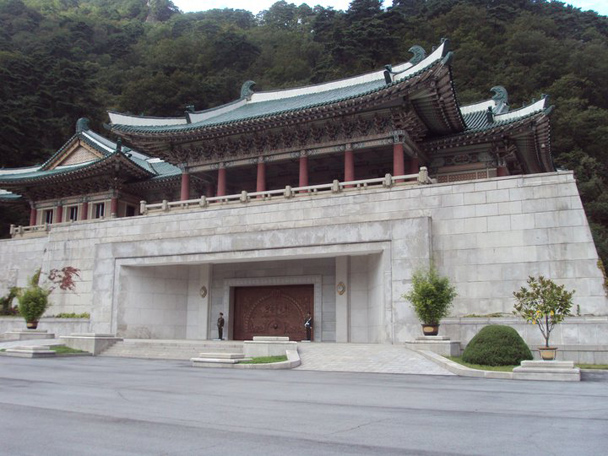

People's Friendship Museum: This museum holds all the gifts given to Korea's leaders over the years, displayed where anyone can come to see them. It is a stunning place to visit, set in incredible mountain scenery and, like everywhere else we visited, beautifully maintained for the benefit of the people.
Among the gifts on display are an armoured car that was given by Stalin to Kim Il Sung during the height of the Korean War, and an armoured train that was given by Mao. There is also a gift from Madeleine Albright – a basketball signed by Michael Jordan! All these gifts are on display and are not considered the personal property of the leaders to whom they were presented.

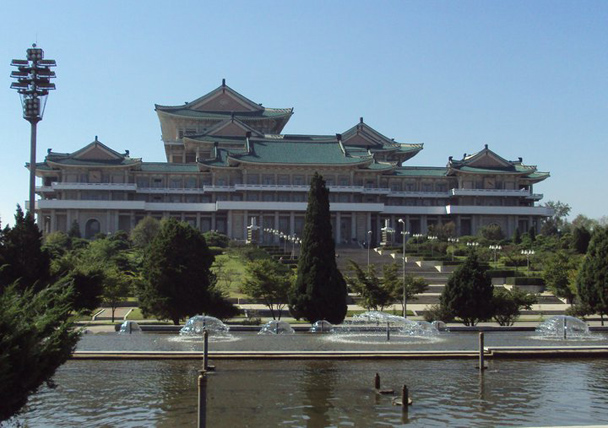
Grand People's Study House: This is a huge computerised library, where professors are always on hand to answer questions relating to any books from fiction to history to politics.
The roof of this incredible building overlooks Kim Il Sung Square and the river Taejong. Over the river is the Tower of Juche, a memorial to the ideology of the Workers' Party of Korea. In the square below young gymnasts are practicing for a new arirang.
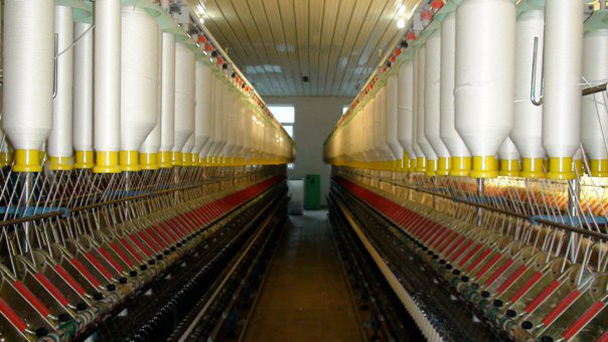
Textile factory: We went to several factories, and have never seen any as clean! The people take a real pride in them.
When we met with the comrades from the Workers' Party of Korea, they told us that they are through the worst of the economic problems that have arisen since the collapse of the Soviet Union, and are now building a modern economy.
One particular concrete problem that they have solved for themselves has been to develop a technique to maximise steel production in the absence of much coke in their country.
They have also enhanced the production of cloth. In their mountainous country there is a shortage of cultivable land and they cannot afford to turn much of it over to cotton production, so they are combining cotton with other fibres such as wood and coal tar so that the population can be properly clothed in the absence of cheap imports. It was a significant economic problem to tackle and they have done so successfully.
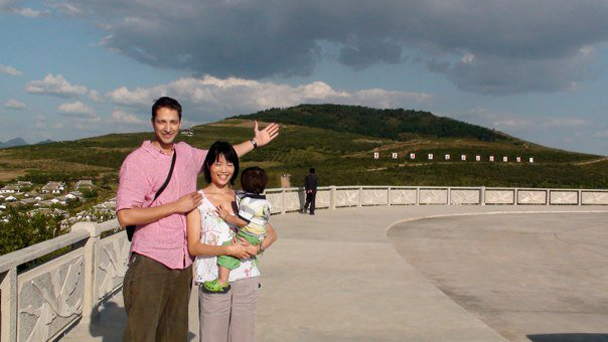
Cooperative farm slogan: This is a paddy field with beautiful mountains in the background. On the far hillside you can see little tablets which reminded us of Hollywood. The slogan on them reads: 'Uphold the people of the DPRK with rice'.
One noticeable aspect of life in Korea is the freedom from mental pressure; there is no advertising, which feels amazing. The slogans you do see are slogans of the people, relevant to the people's struggle for a better life and truly inspiring.

Buddhist temple: This beautiful temple is of great historical significance. It was devastated during the 1950-53 war by US bombing, but Kim Il Sung instructed that it was to be restored. It still acts as a Buddhist temple today.
Interestingly, during the latest Cheonan incident, some south Korean Buddhist monks wanted to come to this temple to worship and pay their respects as an act of solidarity. The DPRK were very happy to allow them to come. But when they went back to south Korea they were imprisoned.
What were the reasons for their imprisonment? There were two charges in court. One of the charges was going to the north of Korea without permission, which is illegal in south Korea. In addition, harbouring sympathy for the north Korean system is an actual offence for which you can be imprisoned in the south of Korea. So there is no freedom of thought in the south.
In the north, on the other hand, there are religious places for those who want to worship. They are not suppressed in any way, and in fact they are maintained by the socialist state. This tells you more about the real state of affairs in the peninsula than hundreds of lines of propaganda that you read in western newspapers.
|
 |
| >>back to Proletarian index |
>>view printer-friendly version |
 |
 |
|
 |
|
 |
 |
 |

